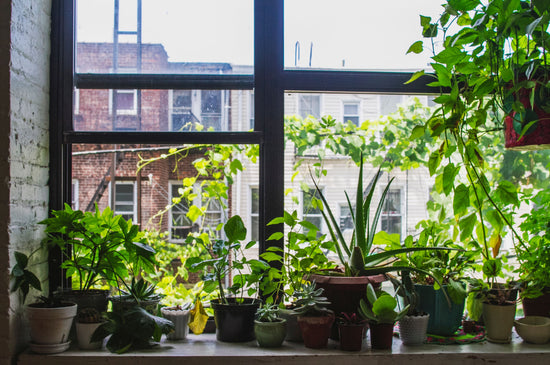Recognizing the Signs of Overwatering in Plants
Watering your plants is an essential part of their care routine, but too much of a good thing can lead to serious problems. Overwatering is one of the most common mistakes plant owners make, and it can harm the health of your beloved greenery. Understanding the signs of overwatering and knowing how to fix the issue can save your plants and promote healthy growth.
Why Overwatering Happens
Overwatering occurs when plants receive more water than their roots can handle, leading to waterlogged soil. This excess moisture prevents oxygen from reaching the roots, causing them to suffocate and, in some cases, rot. While it’s often done with good intentions, overwatering can do more harm than underwatering.
Key Signs of Overwatering
-
Yellowing Leaves
- When plants receive too much water, their leaves may turn yellow. Unlike underwatering, where leaves become dry and crispy, overwatered plants often have soft, limp, or mushy leaves.
-
Wilting Despite Moist Soil
- Wilting isn’t always a sign of dryness. If the soil feels wet and the plant is still drooping, it’s likely suffering from waterlogged roots.
-
Brown or Black Root Tips
- Pulling a plant out of its pot can reveal the health of its roots. Overwatered plants may have brown, black, or mushy root tips instead of firm, white roots.
-
Mold or Fungi on the Soil
- Excess moisture creates an environment for mold or fungal growth on the soil surface. If you see white or fuzzy patches, your plant may be sitting in too much water.
-
Soil That Never Dries Out
- Healthy plants thrive in well-draining soil that dries slightly between waterings. If the soil remains soggy for days, your plant is likely overwatered.
-
Dropping Leaves
- Overwatered plants may lose their leaves prematurely, starting with older leaves near the bottom of the plant. These leaves may fall off even when they appear green.
How to Save an Overwatered Plant
If you suspect your plant is overwatered, there are steps you can take to remedy the situation:
- Assess the Roots: Gently remove the plant from its pot and examine the roots. Trim off any mushy, black, or foul-smelling roots with clean scissors.
- Change the Soil: Replace the old, soggy soil with fresh, well-draining soil. Adding materials like perlite or sand can improve drainage.
- Adjust Watering Habits: Let the top inch of soil dry out before watering again. For most houseplants, it’s better to underwater slightly than to overwater.
- Improve Drainage: Ensure your pot has proper drainage holes. If the pot lacks holes, consider repotting your plant into one that allows excess water to escape.
- Provide Proper Light: Place the plant in an area with bright, indirect sunlight to help the soil dry out faster.
How to Prevent Overwatering in the Future
-
Understand Your Plant’s Needs
- Each plant has unique watering requirements. Research the specific needs of your plant to avoid overwatering.
-
Use the Right Pot and Soil
- Choose pots with drainage holes and use soil designed for the plant species. For example, succulents need fast-draining soil, while ferns prefer more moisture-retentive mixes.
-
Test the Soil Before Watering
- Stick your finger about an inch into the soil to check its moisture level. Only water if the soil feels dry.
-
Establish a Watering Schedule
- While it’s important to monitor soil moisture, creating a consistent watering routine tailored to your plant’s needs can help prevent overwatering.
-
Be Mindful of Seasonal Changes
- Plants require less water during dormant periods, usually in the fall and winter. Adjust your watering habits accordingly.
FAQs About Overwatering
Q: Can overwatered plants recover?
A: Yes, many overwatered plants can recover if the problem is addressed early. Removing excess water, trimming damaged roots, and repotting in fresh soil can help.
Q: How often should I water my plants?
A: The frequency depends on the plant type, pot size, and environmental conditions. Research your plant's specific needs to determine the right watering schedule.
Q: What’s the best way to check soil moisture?
A: Use the finger test—insert your finger about an inch into the soil. If it feels dry, it’s time to water. For a more precise reading, consider using a moisture meter.
Q: What type of soil prevents overwatering?
A: Well-draining soil mixed with perlite, sand, or coconut coir can help prevent overwatering by improving aeration and drainage.
Overwatering is a common mistake that’s easy to fix with proper knowledge and care. By recognizing the signs and making adjustments to your plant care routine, you can keep your plants healthy and thriving. Always research your plant's specific needs and invest in proper tools to ensure they get just the right amount of water.





